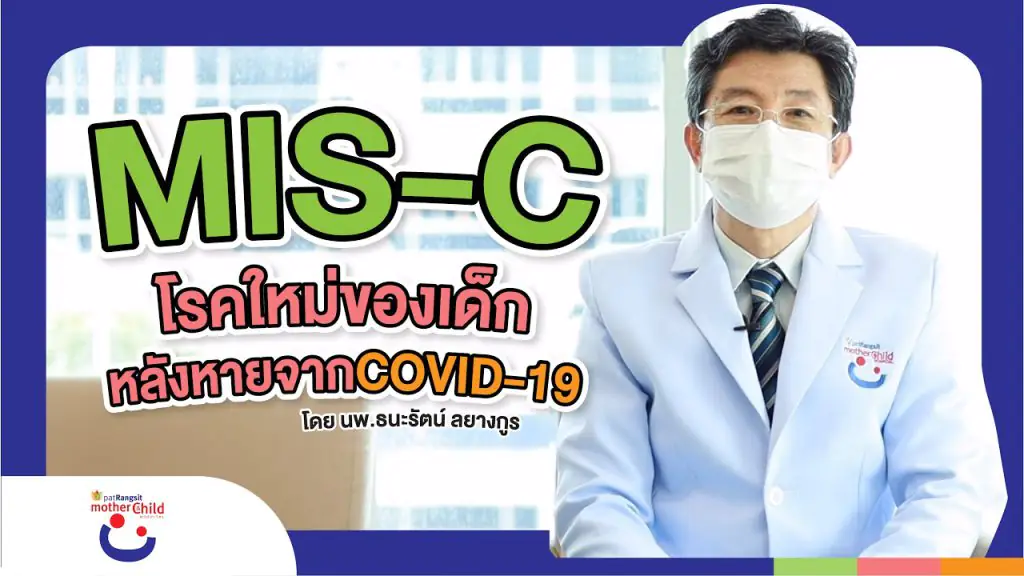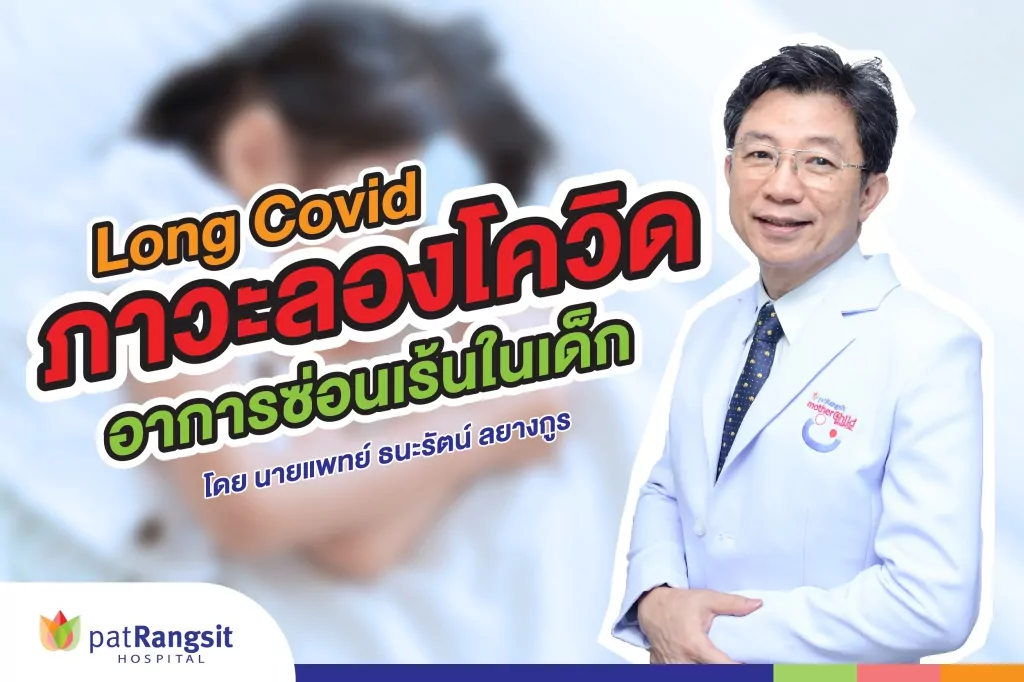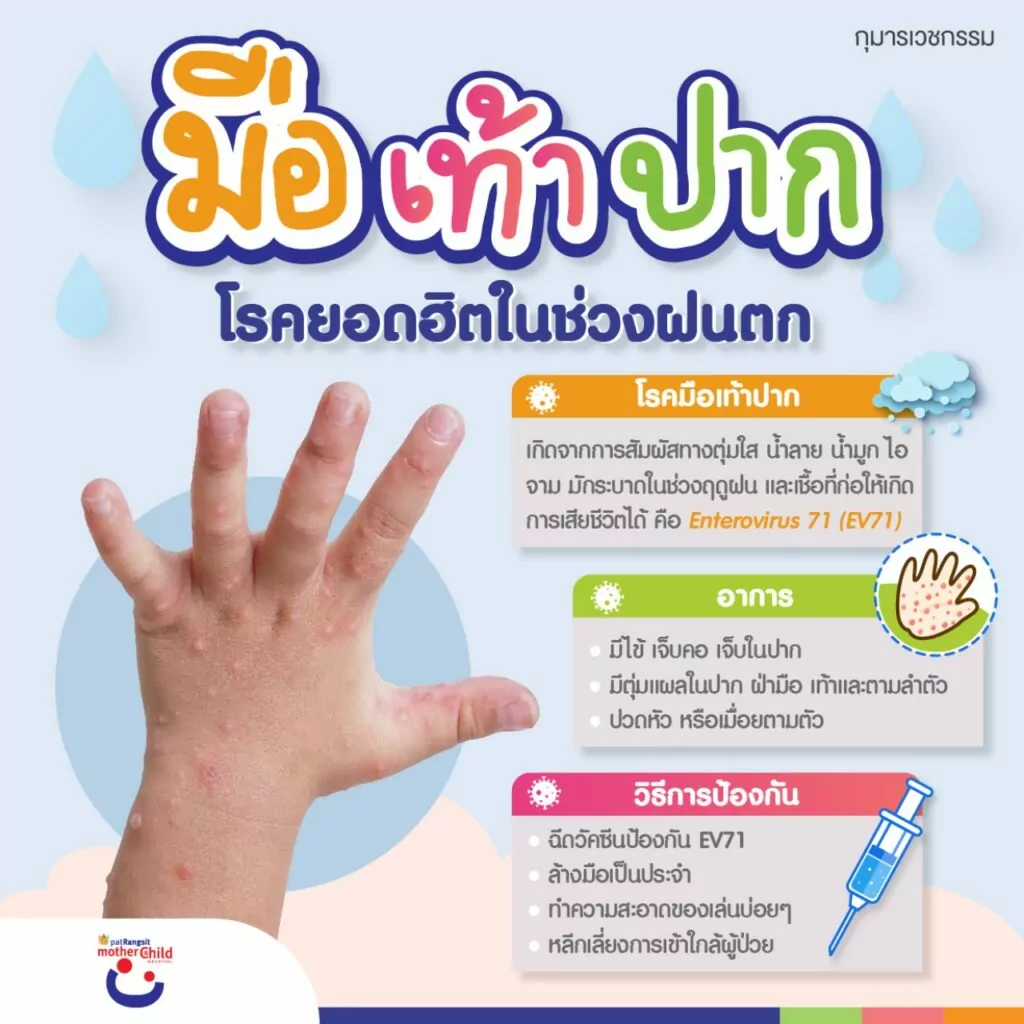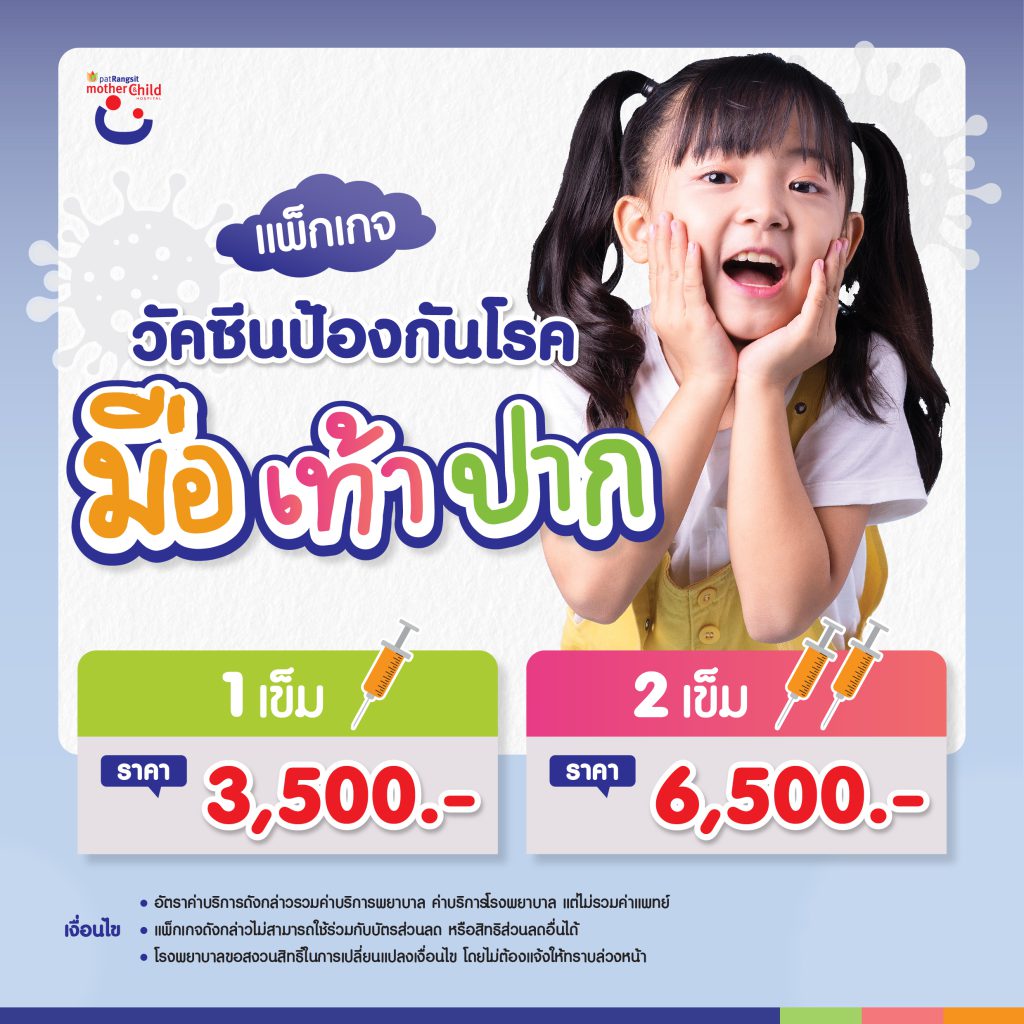
Cause
MIS-C is a syndrome with inflammation of various organs in the body. It is an emerging disease, which can occur after a child is infected with COVID-19. In the beginning, the child may have few symptoms or no symptoms of COVID-19 infection. After about 2-6 weeks (about 1 and a half months), the child will have a fever. It is believed to be caused by the body's immune response to COVID-19, then followed by the symptoms of inflammation of various organs.
Symptom
A child often has a high fever along with symptoms indicating inflammation of at least 2 other organs, the most common being the heart and gastrointestinal organs. Sometimes, a child may have symptoms that are related to several systems such as the skin system, respiratory system, nervous system, and urinary system. In young children, there may be symptoms like Kawasaki fever, including red eyes and rashes, but MIS-C is more severe to the circulatory system. It is severe because there is an aneurysm of the arteries that feed the heart; for instance, the contraction of the heart is abnormal. A child may likely get a seizure more than a child who has Kawasaki fever.
Treatment
The treatment has changed over the past two years. Research shows that the treatment is effective through Immunotherapy (IVIG) given intravenously. This treatment is the same as the treatment for Kawasaki fever. Immunosuppressants (steroids) and new drugs are used to treat localized inflammation in severe cases. Taking aspirin to reduce platelet aggregation can prevent thromboembolic complications in children with coronary artery aneurysms. Most of the treatment results are good but there is a mortality rate in severe cases. Long-term follow-up is still needed.
VDO:

โดย นพ.ธนะรัตน์ ลยางกูร
ผู้อำนวยการโรงพยาบาลเฉพาะทางแม่และเด็กแพทย์รังสิต
Long COVID-19 symptoms are conditions that occur following a COVID-19 infection. Initially, it was observed more commonly in adults with severe COVID-19 symptoms compared to children. However, since the beginning of 2022, an increasing number of children have been infected with COVID-19, leading to the discovery of Long COVID-19 issues in children. This explains why some children experience symptoms that persist longer than others.
What is Long COVID in children?
Long COVID symptoms in children appear 4 to 8 weeks after a COVID-19 infection and can last for over 3 months. While most children infected with COVID-19 exhibit no or milder symptoms, some cases result in severe symptoms requiring pediatric intensive care.
Prevalence of Long COVID-19 in adults and children The incidence of Long COVID in adults can be as high as 25-30% following a COVID-19 infection. Reports from the United Kingdom indicate Long COVID cases in children at approximately 7-8% after COVID-19 infection. This prevalence is higher among older children compared to younger children. Other risk factors for Long COVID include female gender, allergies, underlying diseases, and severe initial infection.
Long COVID symptoms in children can be categorized into two types:
• Headaches
• Fatigue, weakness, rapid heartbeat, and chest pain
• Insomnia
• Muscle pain, abdominal pain, nausea, vomiting, and body rashes
• Difficulties in communication, such as trouble finding words
• Impaired academic performance
• Short attention span
• Emotional expression abnormalities, which may be caused by Long COVID or communication difficulties
Many physical symptoms are challenging to recognize, and certain symptoms, especially neurological symptoms, may be hidden. Parents and teachers should closely monitor children who struggle to communicate or exhibit academic decline or changes in behavior. Suspecting Long COVID and involving the child in the diagnosis and treatment process, whether through a child development clinic or child psychiatry, is crucial for their care.
Treatment of Long COVID in children Given the wide range of symptoms associated with Long COVID, treatment should involve investigating the underlying cause and close medical supervision. It is essential to identify any complications resulting from COVID-19 or unrelated disorders, such as diabetes following COVID-19 infection. Treatment is primarily based on managing symptoms and addressing detected abnormalities. As Long COVID is still a relatively new condition, further research is needed to enhance treatment approaches.
บทความโดย นพ.ธนะรัตน์ ลยางกูร
ผู้อำนวยการโรงพยาบาลเฉพาะทางแม่และเด็กแพทย์รังสิต
สนใจสอบถามหรือปรึกษาแพทย์ สามารถติดต่อได้ที่...
เบอร์โทร : 02-998-9888 ต่อ 3101 , 3102 (คลินิกกุมารเวชกรรม)
02-998-9888 ต่อ 3216 , 3217 (คลินิกพัฒนาการเด็ก)
ช่องทางอื่นๆ
Facebook : PatRangsit Hosptal
INBOX : https://bit.ly/2xNaFc1
LINE : https://bit.ly/33p9nzw

Hand, Foot, and Mouth Disease (HFMD)
Hand, Foot, and Mouth Disease (HFMD) is an infectious illness that primarily affects children. It is important for parents to observe flu-like symptoms in their infected child. The initial symptoms of HFMD are similar to those of a cold, including many blisters or ulcers in the mouth. Additionally, a child may develop a red rash or small blisters on the palms, fingers, soles, or buttocks, along with a fever that can last for 5-7 days. It is crucial to note that HFMD can lead to severe complications such as meningitis, encephalitis, paralysis, weakness, myocarditis, and even death. The severity of complications is not necessarily related to the number of mouth ulcers or lesions found on the palms and soles of the feet. In severe cases, there may be only a few sores in the neck or a few blisters on the palms and soles of the feet. Therefore, parents should closely supervise their children during the first 1-2 weeks. Over time, the rashes and mouth ulcers will disappear
Warning signs of severe complications include:
Causes of Hand, Foot, and Mouth Disease (HFMD) are attributed to enterovirus infections, with more than 100 strains identified. The most common strains responsible for the disease are coxsackievirus A16 and enterovirus 71. Infants and young children under 5 years of age are at a higher risk of developing more severe symptoms compared to older children.
Currently, a vaccine is available specifically targeting enterovirus 71, which can cause severe symptoms leading to death. However, it is important to note that the vaccine does not provide complete protection against other strains of the virus. Therefore, treatment for HFMD focuses on managing the patient's symptoms. If the child experiences a sore throat and difficulty eating, supportive measures such as providing water, milk, and soft foods should be taken. In cases of fatigue, hospitalization and intravenous fluid administration, along with antipyretic and analgesic drugs, may be necessary. Anesthetic drops can also be used to alleviate the pain caused by mouth ulcers, while close monitoring for symptoms of brain and heart complications is crucial.
Prevention measures for HFMD include:
Ultimately, parents are the closest individuals to an infected child and should be vigilant in monitoring symptoms. If the child experiences unusual symptoms, seeking medical attention promptly is advised.

บทความโดย
พญ. อภิภัสร์ สุทธิพันธุ์

เว็บไซต์นี้มีการใช้งานคุกกี้ เพื่อเพิ่มประสิทธิภาพและประสบการณ์ที่ดีในการใช้งานเว็บไซต์ของท่าน